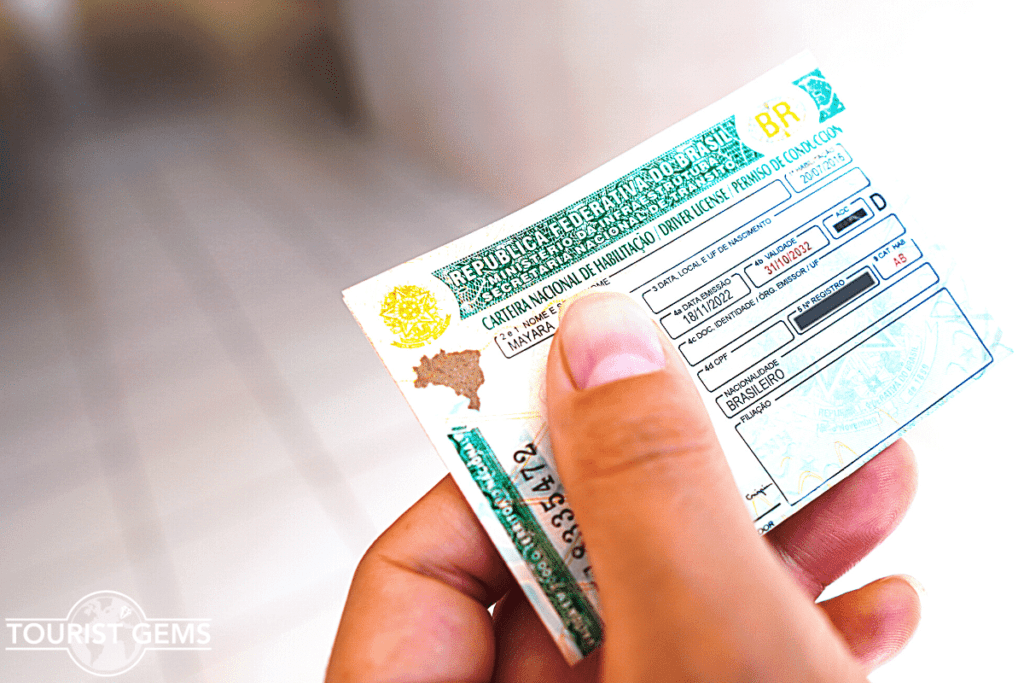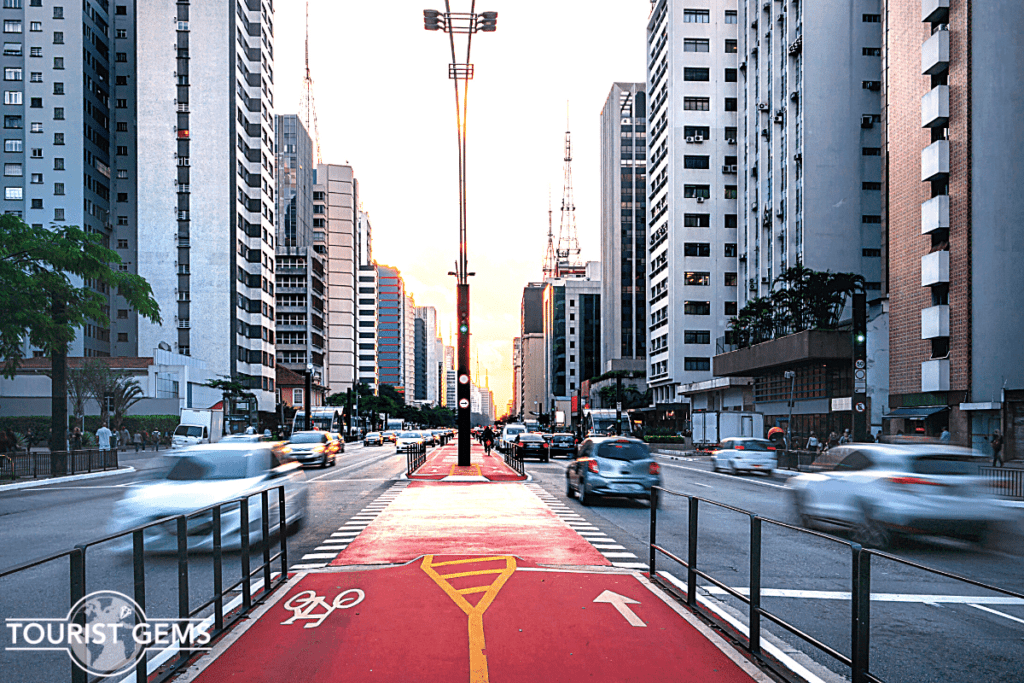Can you drive to Brazil from the United States? The answer is yes, you can! But it’s not as simple as hopping in your car and hitting the road. There are a few things you’ll need to consider. From planning your route to understanding the legalities, it’s a journey that requires careful preparation. Here, we’ll take a closer look at what it takes to embark on this epic road trip. Buckle up and get ready to explore the possibilities of a drive from the US to Brazil.
Driving to Brazil from the United States

Yes, you can indeed embark on this journey of epic proportions. But before you jump into your car and set the GPS for Brazil, let’s take a closer look at what exactly this adventure entails.
First and foremost, it’s imperative to map out your route. You’ll be traveling through various countries, each with its own set of rules and regulations. You’ll need to cross numerous international borders and broker your way through customs checkpoints. Hence, careful planning is key.
Being well-informed about each country’s entry and exit regulations can save you from potential scrapes.
As far as the route goes, this will heavily depend on your starting point. Typically, the most common route is from Alaska’s Prudhoe Bay, through Central America, and all the way to Brazil.
Keep in mind, though, that sections of this route, such as the Darien Gap in Panama, are impassable by car and will require alternate means of transport.
Beyond planning your route, keep a close eye on vehicle compatibility. Ensure your vehicle is able to handle the varied terrains you’ll be encountering – from long stretches of highway to rugged mountainous trails.
More importantly, your vehicle should be in peak condition as mechanical support can be sparse in certain areas.
Packing plays an equally indispensable part in this journey. You’ll need to be proactive about having sufficient food, water, and basic necessities. Given that you’ll be on the road for several weeks, if not months, consider packing light but also adequately enough to handle emergencies.
Lastly, you’ll need to consider the legal implications of this journey. Each country you pass through will have its own requirements for temporary vehicle importation, so be sure to do your research on this. At the same time, remember to have all your travel documents in order, from your passport to your driver’s license and vehicle registration.
Your drive from the U.S. to Brazil will undoubtedly be a challenging, yet rewarding journey. Each country you pass through presents a chance to soak in a new culture and broaden your horizons. So take the time, do the planning, and embark on this memorable adventure.
Road Trip Routes to Brazil

Adventures are made of unbeknownst paths and thrilling experiences. Embarking on a road trip from the United States to Brazil will offer you just that. Gearing up to explore this 7500 miles of terrestrial beauty is an exhilarating endeavor, but it’s paramount to first figure out the routes.
Here you’ll unravel the possibilities of three major routes – Northern, Central, and Southern.
Northern Route
The Northern Route is your gateway to a thrilling journey, starting from the United States to Brazil. This path lets you traverse the vibrant cityscapes of Miami, Panama City, and the alluring coastlines of Costa Rica. Going through the tropical antenna of Panama, it heads down to Colombia, trailing along the Pacific coast to Ecuador and Peru.
You’ll then pass through the heart of the Amazon in Brazil, before reaching your final stop, Rio De Janeiro. However, the Northern Route presents a significant hurdle: the Darien Gap between Panama and Colombia. This 100-mile stretch is a roadless, notoriously dangerous terrain.
Central Route
On the other hand, the Central Route offers a slightly less challenging journey. From the United States, this route takes you to the captivating historical locales of Mexico, and then through the breathtaking cityscape of Guatemala City.
It then dips south, bringing you through the vibrant Costa Rica, Panama, and Colombia. Unlike the Northern Route, this path detours around the Darien Gap navigating through Colombia and Venezuela before arriving in Brazil.
Be reminded, that this route requires a ferry or air travel in Colombia, due to the Darien Gap obstruction.
Southern Route
The Southern Route is a longer yet scenic option. This path, from the United States, takes you through Texas, cruising you around the Mexican coast, and further to the bustling streets of Mexico City and Guatemala City.
The route then brings you to Panama, meandering through Colombia, Ecuador, Peru, Bolivia, and Paraguay before hitting the Brazilian turf. This route indulges travelers with a more comprehensive sight of South America but also demands considerable endurance for its vast stretch and divergent terrains.
So these are the principal routes you might consider for your journey from the United States to Brazil. Each pathway is imbued with its unique charm and challenges. Your choice will largely depend on your personal preferences, your vehicle’s compatibility with different terrains, and your readiness to face the unpredictable.
Embrace the unexpected and let the road take you to a place known as Brazil. Just remember – the road to Brazil isn’t just a drive, it’s the memory of a lifetime waiting to be created.
Required Documents for Driving to Brazil

Organizing your paperwork, without a doubt, is not the most exciting part of planning your epic road trip from the US to Brazil. Nevertheless, it’s a crucial step to ensure you encounter as few hiccups as possible during your adventure.
Passports and Visas
First and foremost, you’ll need a valid passport. Your passport must also have at least six months’ validity remaining from your projected departure from Brazil. It’s absolutely essential; no two ways about it.
As for the visa, US citizens at presently do not need a tourist visa to enter Brazil if the visit is brief. This applies for visits of up to 90 days. However, always double-check as immigration policies can rapidly change. The best method is to validate this with your nearest Brazilian Embassy or Consulate.
Vehicle Documentation
When driving your own vehicle, the list of essential documents extends. You must carry the original or a certified copy of your vehicle’s registration. The document should contain clear information about who owns the vehicle. If it’s a rental car, you’ll need adequate documentation from the rental agency permitting you to drive into Brazil.
Additionally, you’ll need an International Driving Permit (IDP) along with your valid driving license. The IDP is a globally recognized form of identification that carries your name, photo, and driver information translated into ten languages. Please note that you must obtain your IDP in the US before you embark on your journey.
Travel Insurance
It’s recommended to secure adequate Travel Insurance before hitting the road. While it’s not a legal requirement, it’s a measure that might save you from significant unexpected expenses or complications.
The insurance should ideally cover emergency medical care, repatriation, theft or damage of belongings, and coverage for travel disruption. Various companies offer comprehensive travel insurance with features tailored for road trips, so research to find a policy that suits your needs best.
As you progress in your plans remember to always stay updated with any changes in documentation requirements. You can do so by regularly checking up-to-date travel advisories and information from credible sources or your travel agencies.
Ensuring that all your documents are correct will make your journey go smoother and help you avoid any unnecessary delays or issues.
Safety Tips for Driving through Multiple Countries

Preparing your documents for a road trip from the United States to Brazil is just one part of the journey. You should also be ready to navigate the issues of personal safety and vehicle security. Here are some key points to keep in mind.
Awareness of Route
Being knowledgeable about the route you’ll be taking is critical. Research the locations you plan to journey through, paying special attention to regions known for particular safety risks or challenges.
Google Maps is a great tool, but don’t entirely rely on it since internet access may not be available everywhere.
Vehicle Maintenance
Regular vehicle maintenance checks are essential. You wouldn’t want your vehicle to break down in a remote area. Checking vital components like brakes, batteries, tires, and coolant levels can prevent many unforeseen issues.
Understanding Local Traffic Laws
Abiding by local traffic laws and regulations can keep you out of trouble. Different countries have different rules, and not being familiar with them can cause unnecessary problems. A little knowledge here can go a long way!
Emergency Preparedness
Traveling with a compact emergency kit can make a huge difference when the unexpected occurs. Some essential items include:
- First aid kit
- Spare tire
- Flashlight
- Jumper cables
- Multitool
Travel Insurance
Having travel insurance can be a lifesaver, considering the cost of potential medical emergencies or car repairs. Ensure it covers both personal accidents and vehicle issues.
Keep Valuables Secure
Avoid leaving any substantial amount of cash or electronics in your car, especially in plain sight. Theft is a potential risk during such extensive trips.
Last Tourist Gem
So, can you drive from the United States to Brazil? Absolutely, you can. But it’s not just about hopping in your car and hitting the road. It’s about planning and preparation. It’s about understanding the route, keeping your vehicle in top shape, and being aware of local traffic laws.
It’s about being ready for emergencies and securing your valuables. Most importantly, it’s about having travel insurance to cover any unexpected incidents. With careful planning and the right mindset, you’re all set for an unforgettable road trip adventure from the United States to Brazil. Safe travels!
